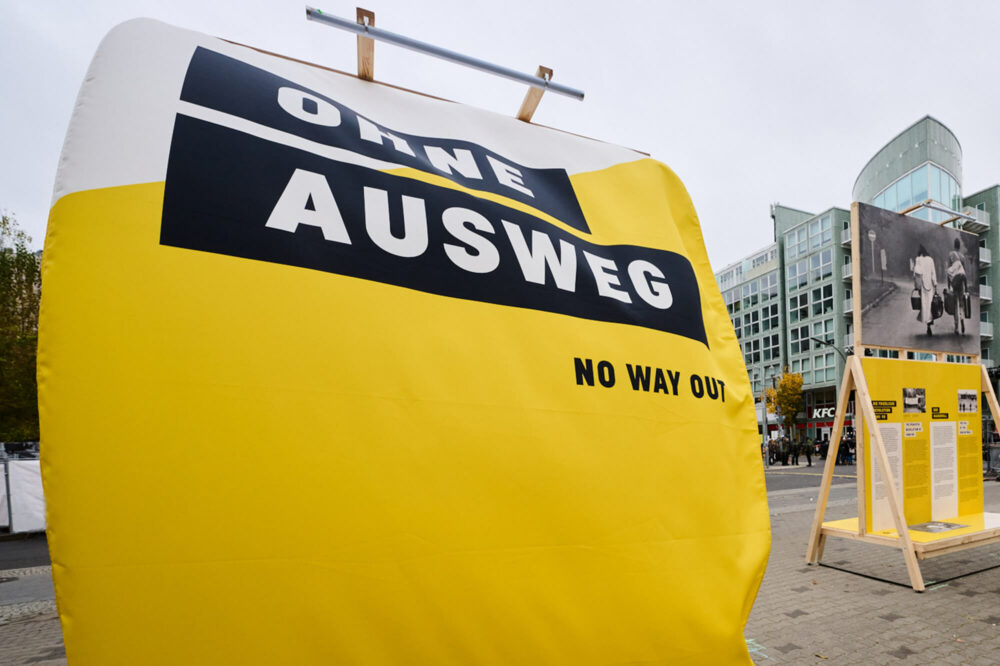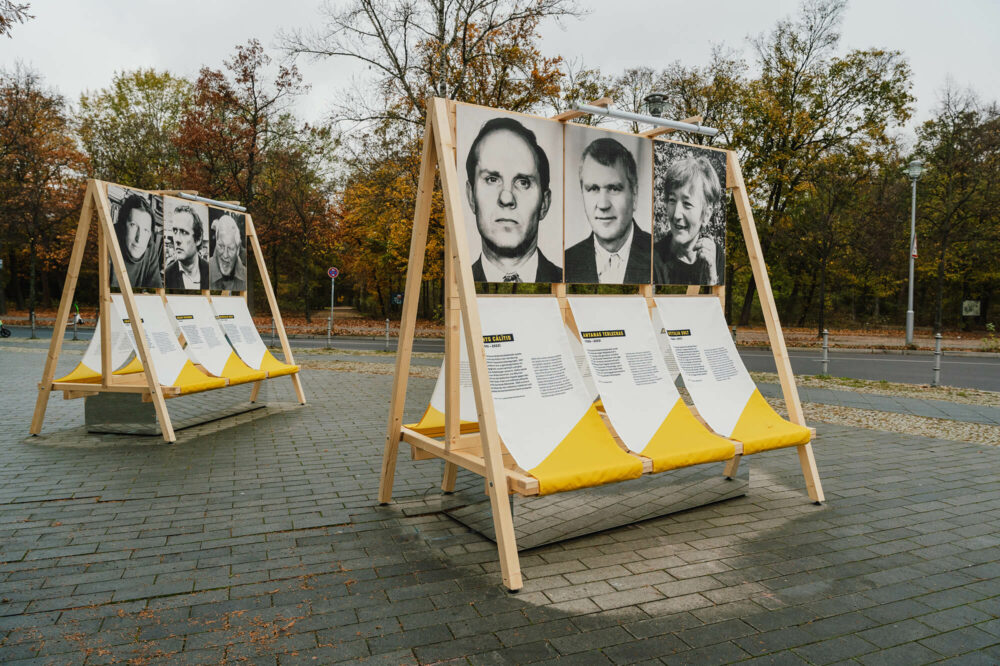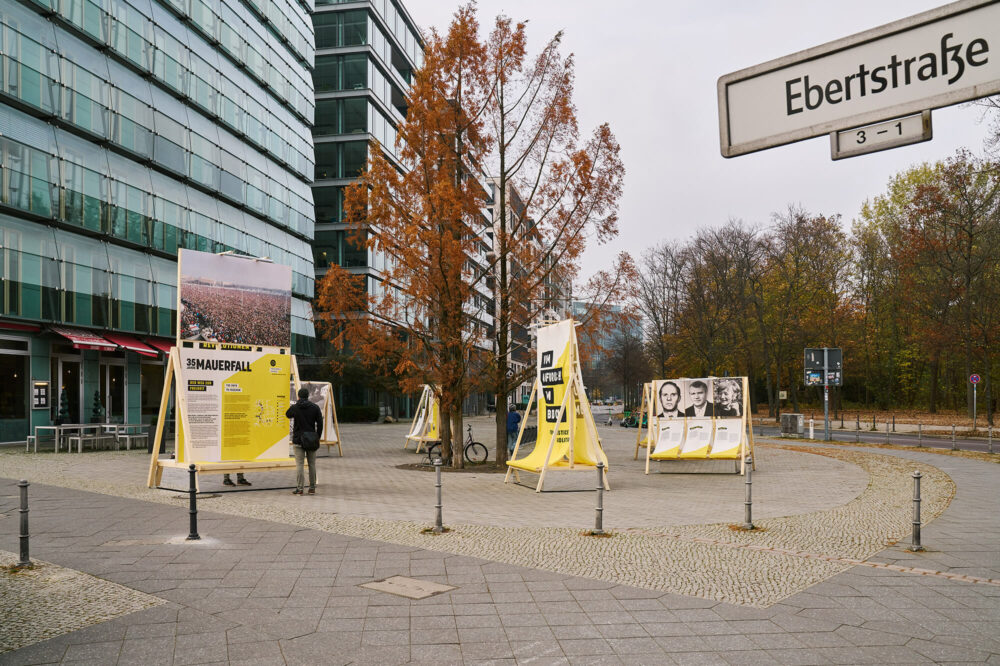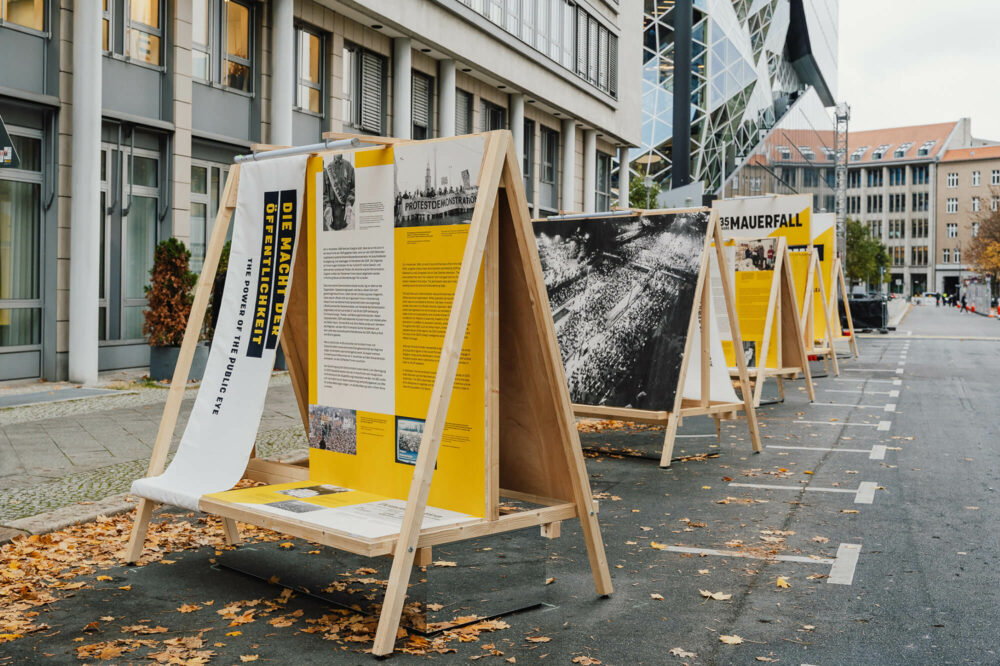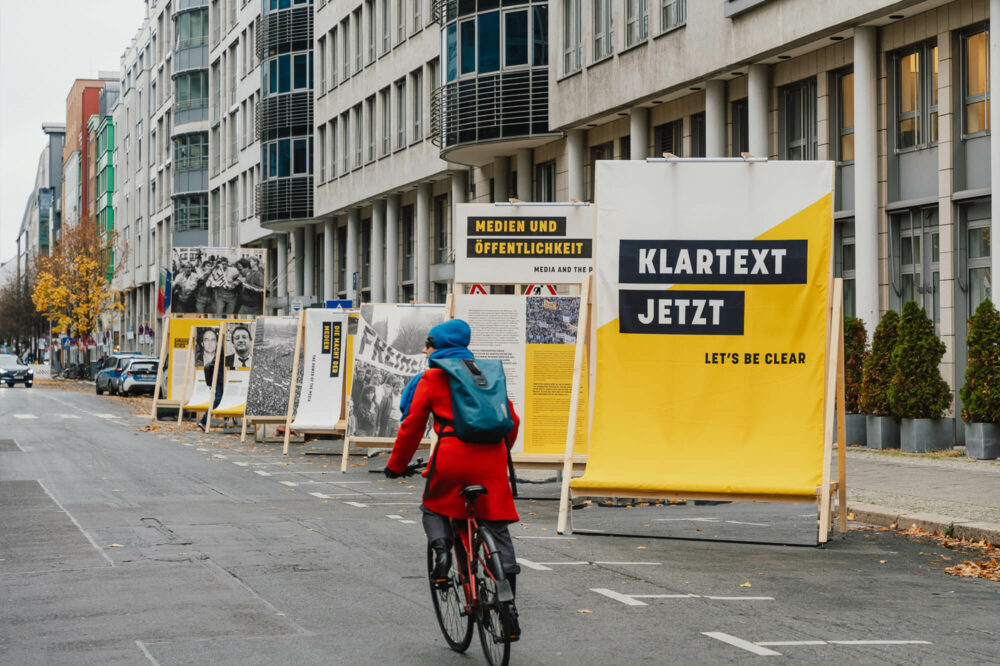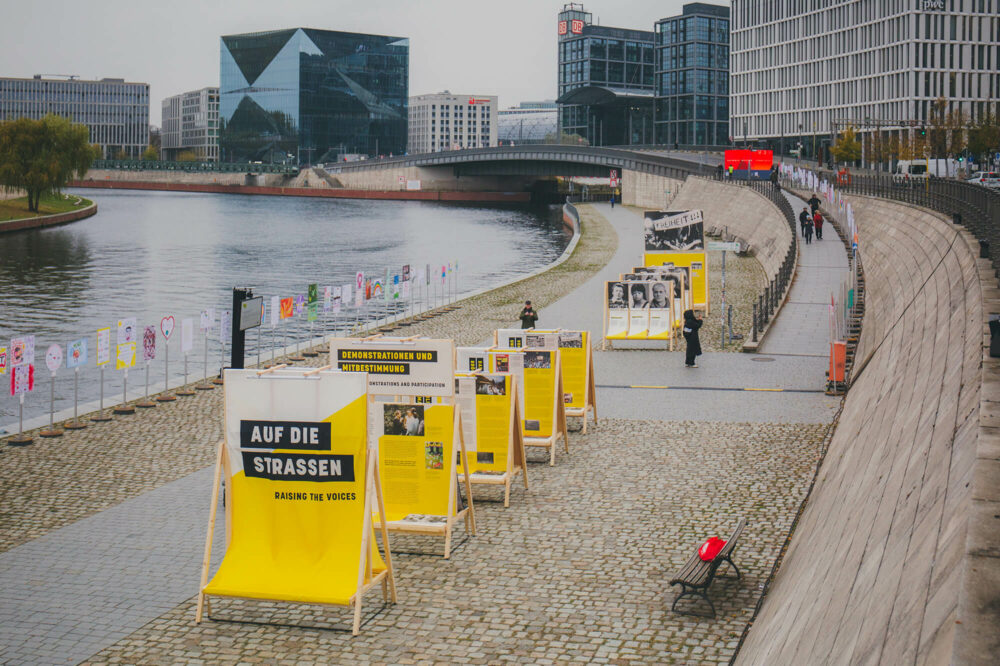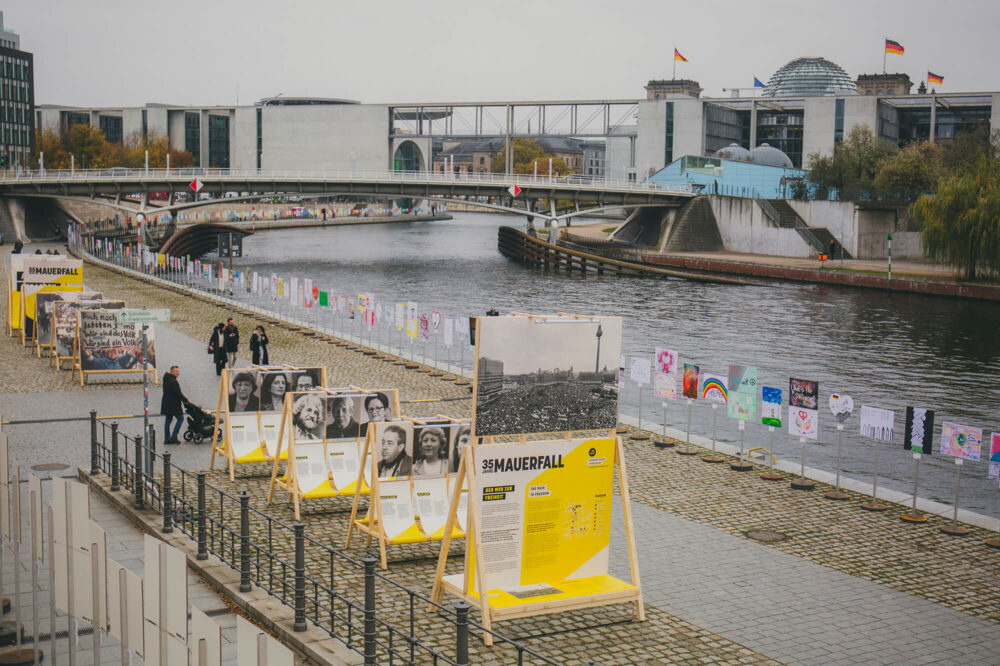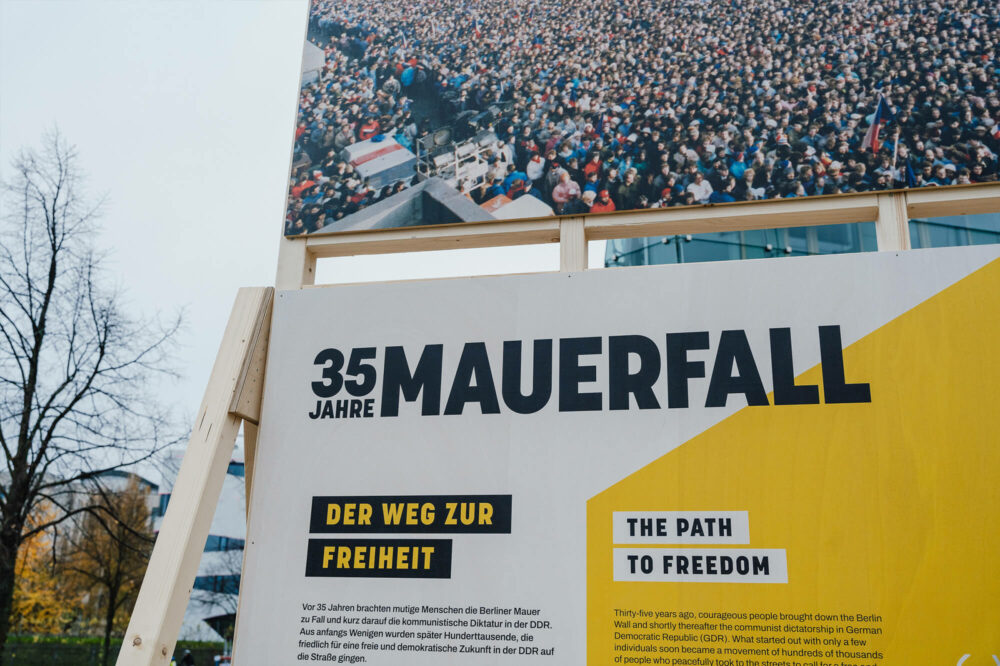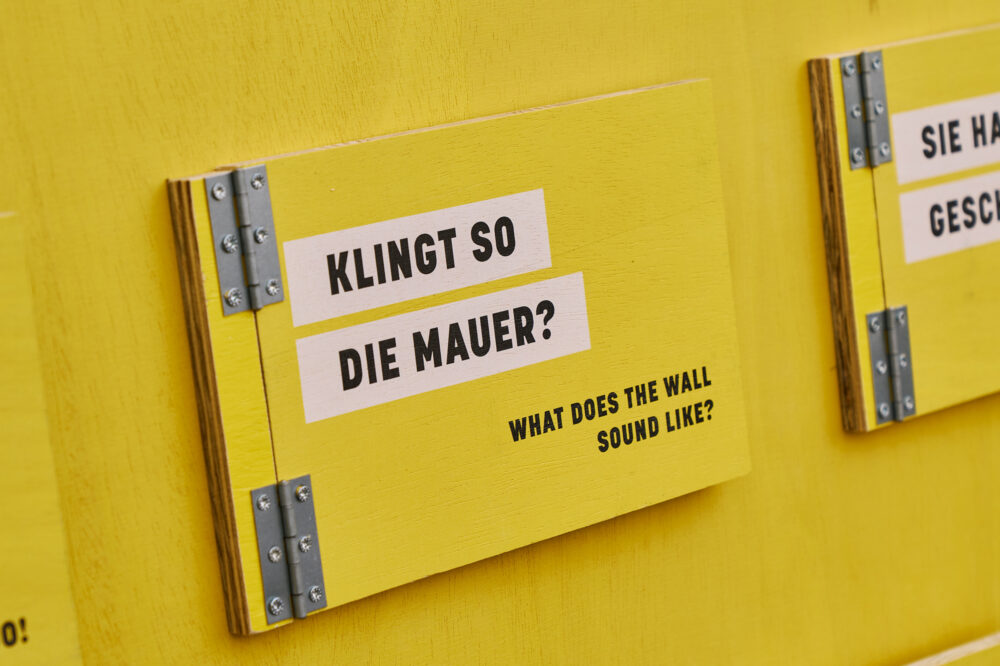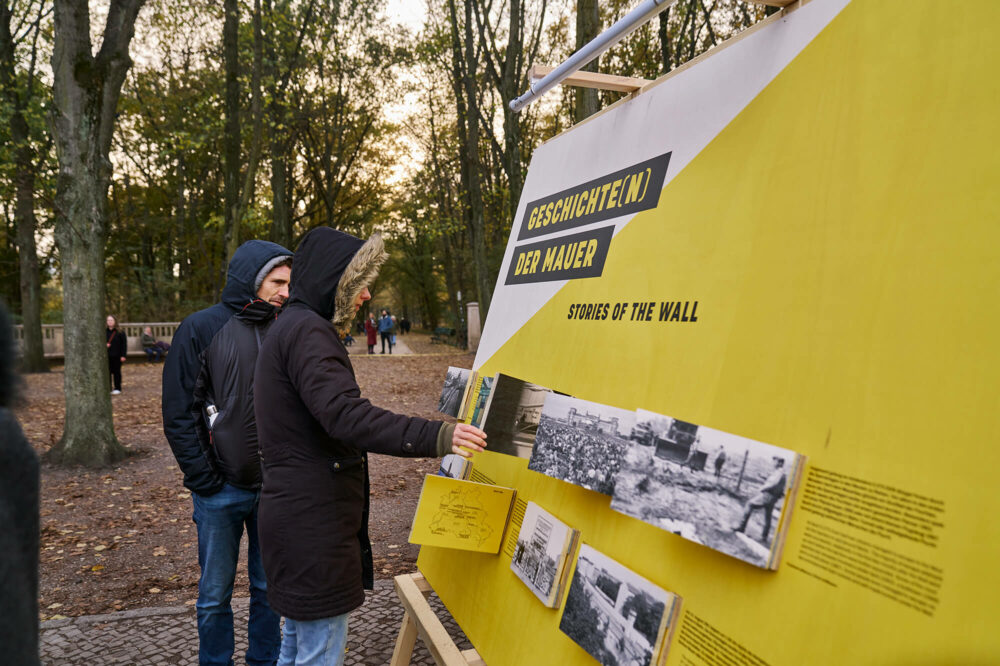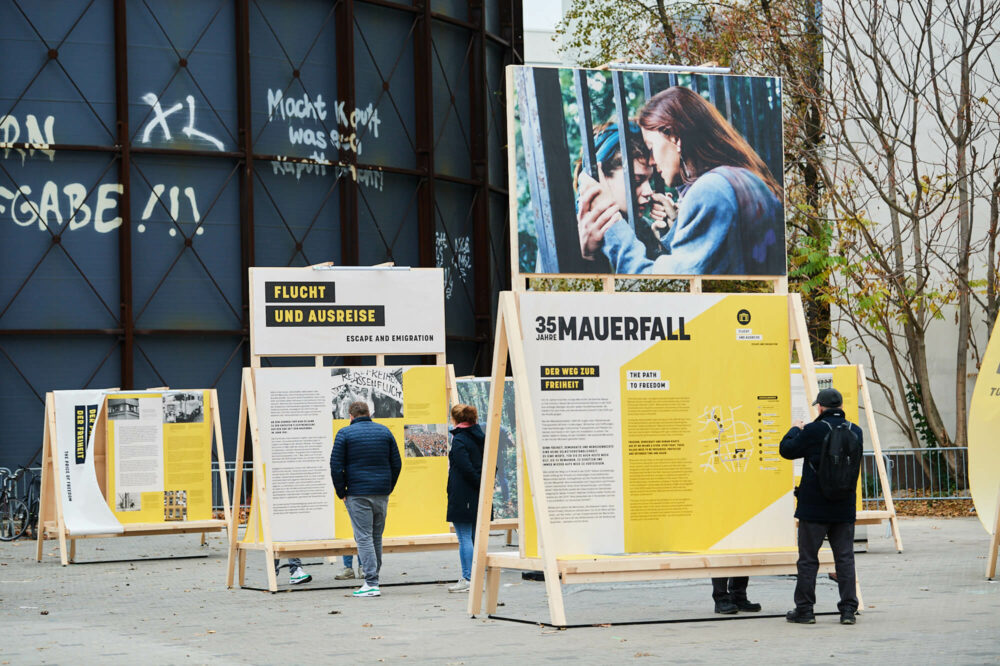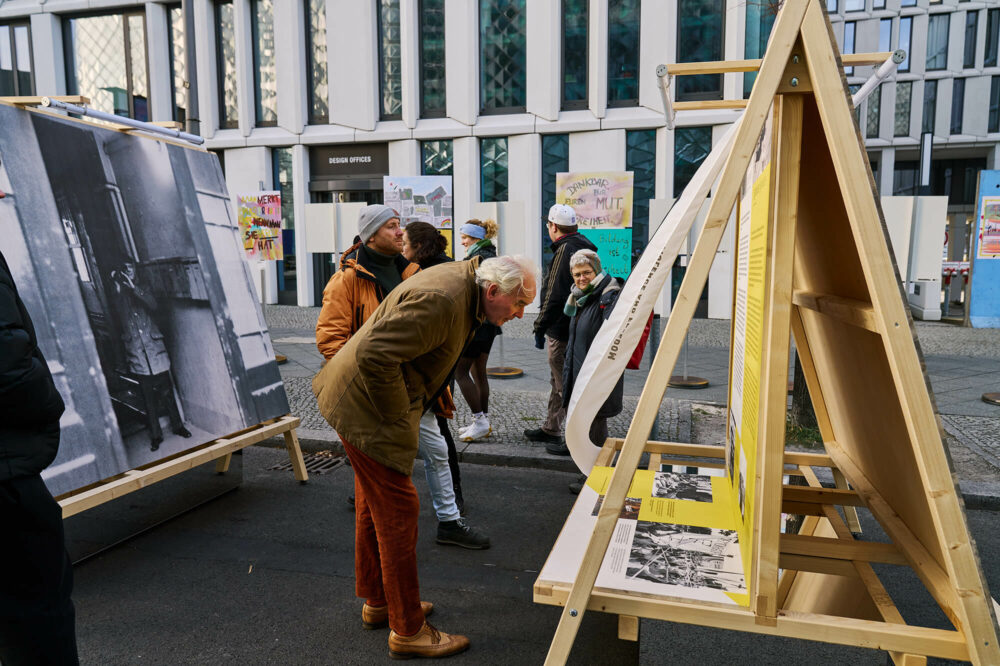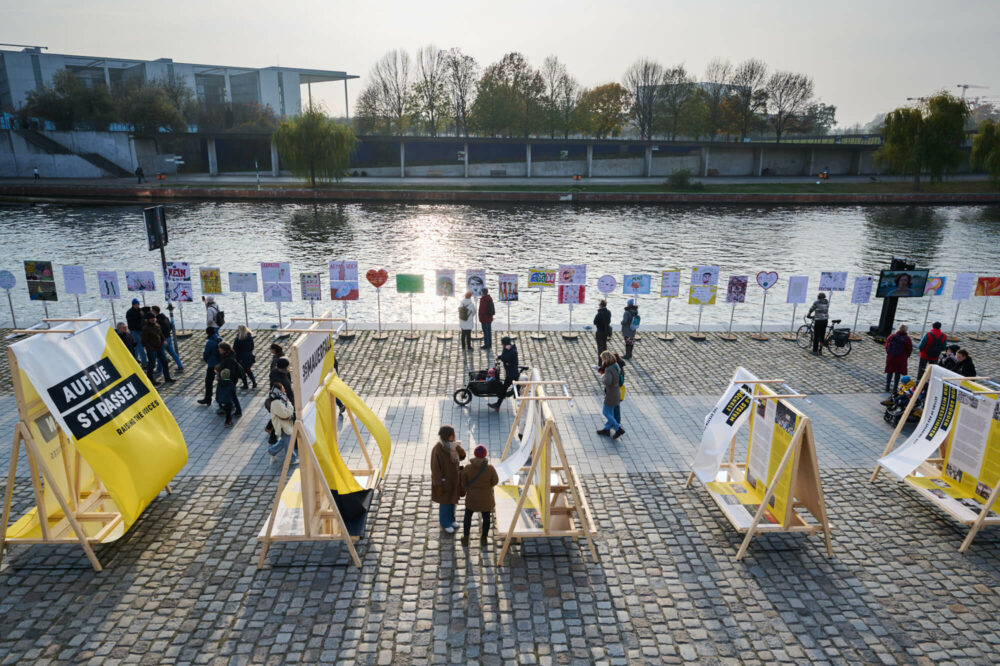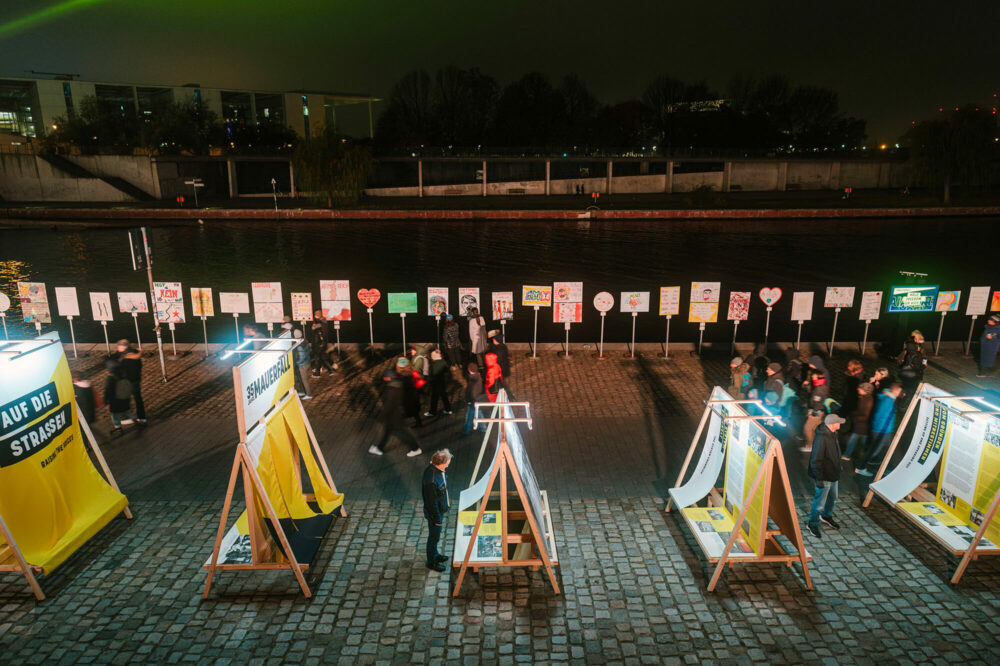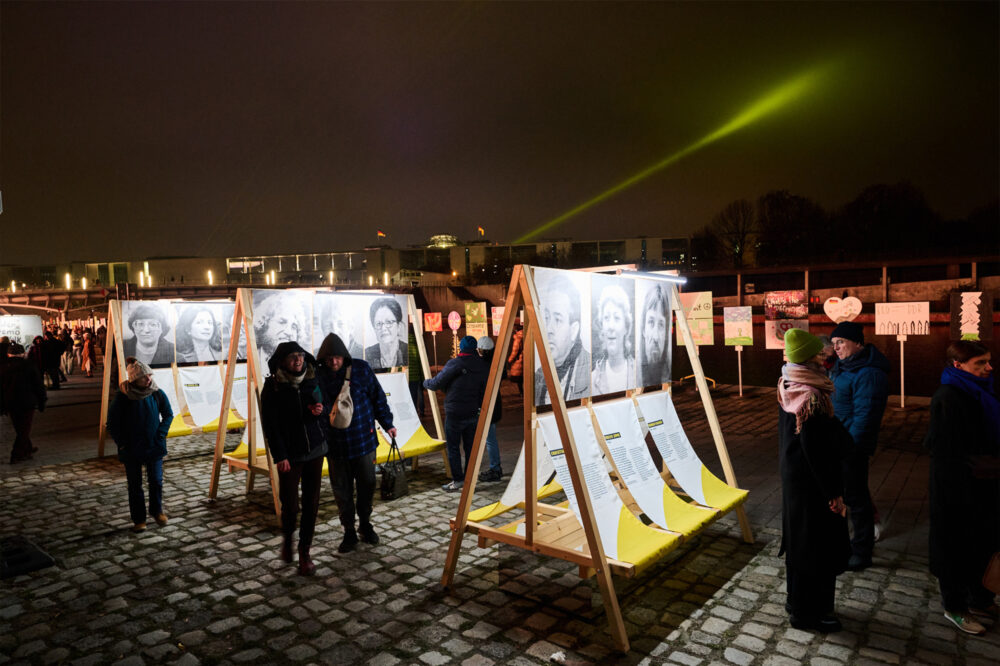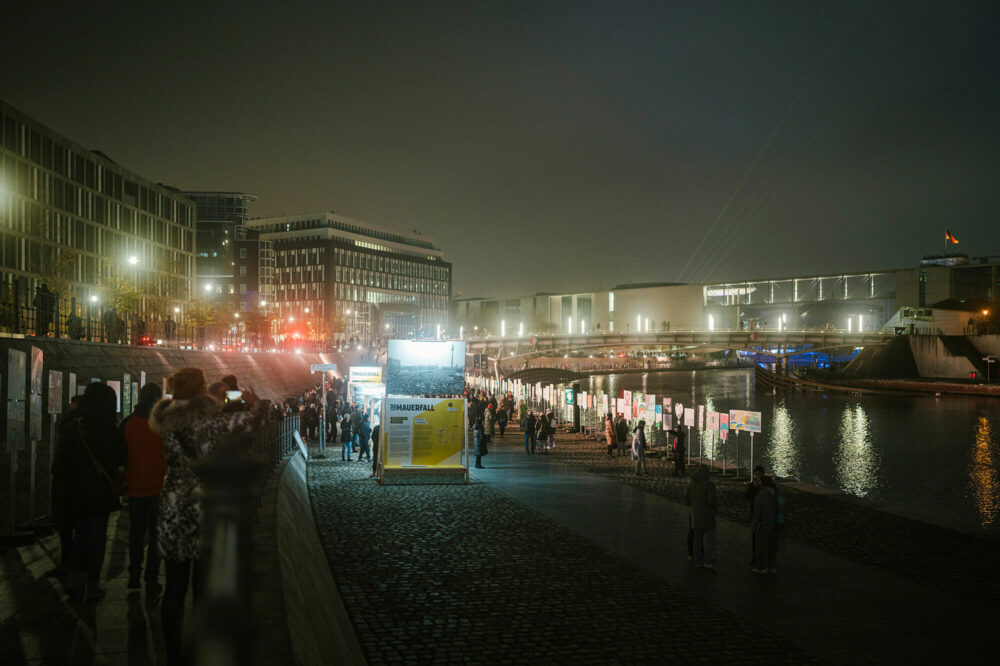Open-Air Exhibition
35th anniversary of the fall of the Berlin Wall
Creative Direction Exhibition Design
Helen-Sophie Mayr, Bernadette Schendina, Melanie Eichler, Björn Weigel
Berlin
The open-air exhibition “The Path to Freedom” narrated important milestones of the peaceful revolution in seven “stations”, illustrating how they led to the fall of the Berlin Wall. The exhibition segments were erected at memorial and commemorative sites along the former inner-city Wall Trail and were visibly connected through the 4-kilometre open-air-installation serving as a unifying element. Each location focused on a main theme, which was examined categorically and highlighted with impressive photographs and reports from eyewitnesses of the time. To visually communicate the power of the images and stories within the urban space, we developed an exhibition architecture—serving as the visual link for the decentralized exhibition. It was inspired by the aesthetics of public demonstrations and visual codes of traditional protest culture, further complementing the decentralized concept. The material mix of wood and textiles was the key design feature. Plywood panels and textile banners, printed with graphical and explanatory content, were integrated into a framework made of timber beams, allowing them to be positioned flexibly as freestanding modules. For each station, we reproduced this structural principle as an 8-part series in five different versions: smaller “standard and portrait modules” for in-depth knowledge transfer, larger variants used as introductory elements or thematic panels—especially drawing visitors’ attention through meter-high panoramic images. The vibrant exhibition design and large headlines created an intense visual impact, effectively emphasizing the intended protest aesthetic when combined with the wind-rippled textile banners. The combination of height development, exhibition graphics, and scenography enabled the creation of suitable spatial images for each location, which could take the form of a circle, corridor, or square depending on the modular flexibility. This added a dynamic and varied flow to the exhibition tour.
